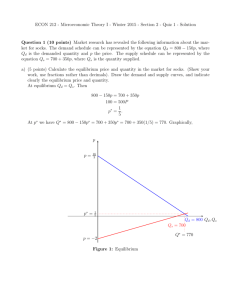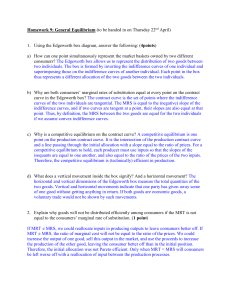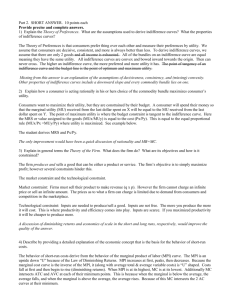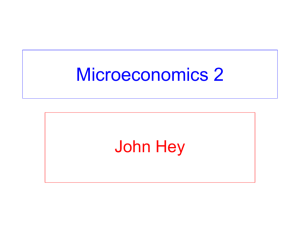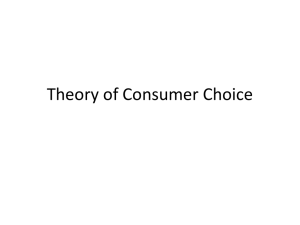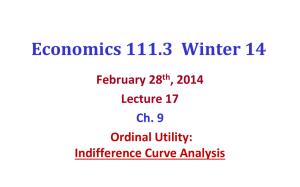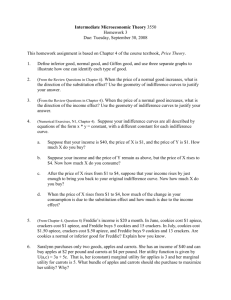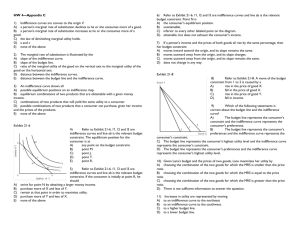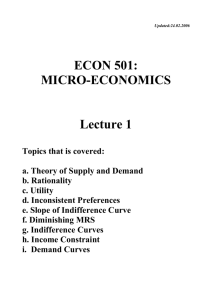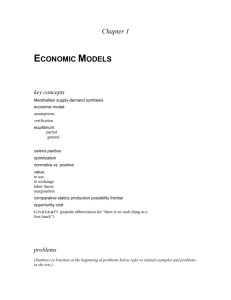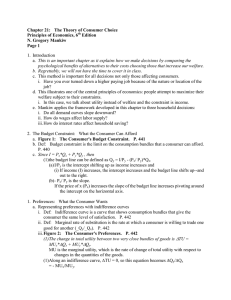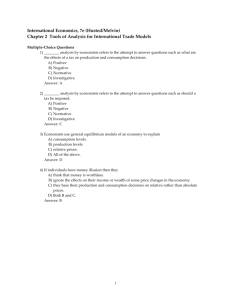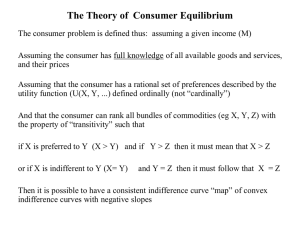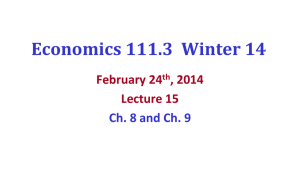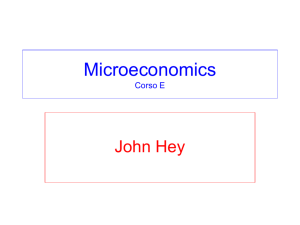Quiz1
advertisement
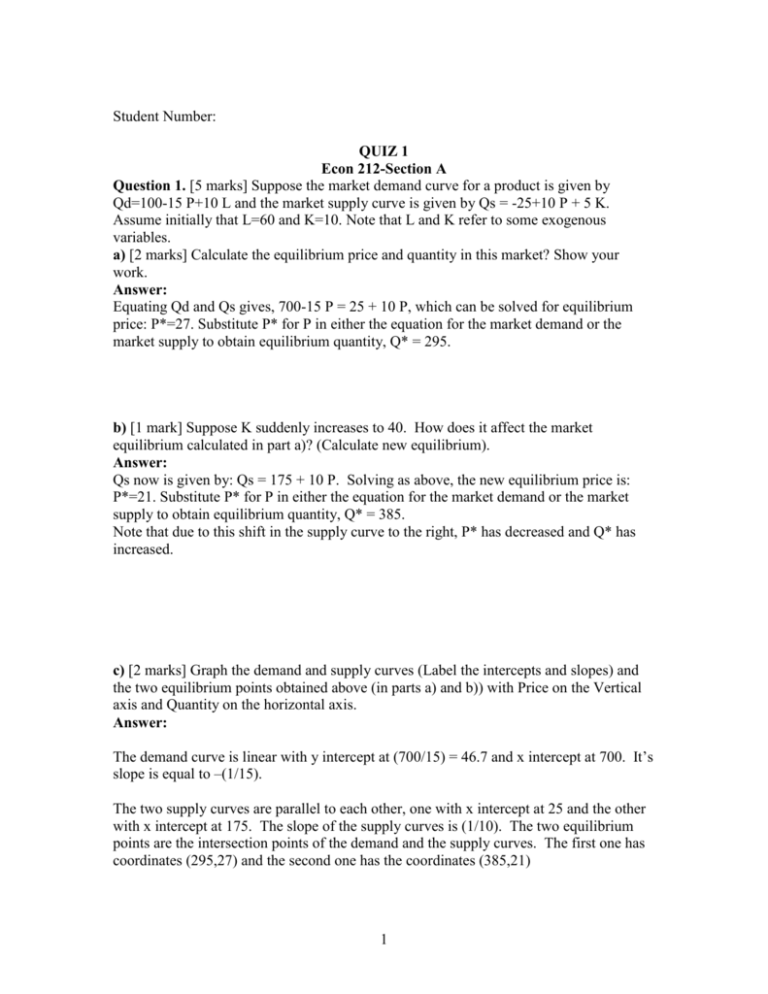
Student Number:
QUIZ 1
Econ 212-Section A
Question 1. [5 marks] Suppose the market demand curve for a product is given by
Qd=100-15 P+10 L and the market supply curve is given by Qs = -25+10 P + 5 K.
Assume initially that L=60 and K=10. Note that L and K refer to some exogenous
variables.
a) [2 marks] Calculate the equilibrium price and quantity in this market? Show your
work.
Answer:
Equating Qd and Qs gives, 700-15 P = 25 + 10 P, which can be solved for equilibrium
price: P*=27. Substitute P* for P in either the equation for the market demand or the
market supply to obtain equilibrium quantity, Q* = 295.
b) [1 mark] Suppose K suddenly increases to 40. How does it affect the market
equilibrium calculated in part a)? (Calculate new equilibrium).
Answer:
Qs now is given by: Qs = 175 + 10 P. Solving as above, the new equilibrium price is:
P*=21. Substitute P* for P in either the equation for the market demand or the market
supply to obtain equilibrium quantity, Q* = 385.
Note that due to this shift in the supply curve to the right, P* has decreased and Q* has
increased.
c) [2 marks] Graph the demand and supply curves (Label the intercepts and slopes) and
the two equilibrium points obtained above (in parts a) and b)) with Price on the Vertical
axis and Quantity on the horizontal axis.
Answer:
The demand curve is linear with y intercept at (700/15) = 46.7 and x intercept at 700. It’s
slope is equal to –(1/15).
The two supply curves are parallel to each other, one with x intercept at 25 and the other
with x intercept at 175. The slope of the supply curves is (1/10). The two equilibrium
points are the intersection points of the demand and the supply curves. The first one has
coordinates (295,27) and the second one has the coordinates (385,21)
1
Question 2. [5 marks]
a) [2.5 marks] Consider two goods, C and D. Jason believes that goods C and D are
perfect complements and always uses 8 units of good C with 3 units of good D. Write
down Robert’s utility function over goods C and D.
Answer: The following utility function (out of many possible, though all will be in
similar form) will represent the given preferences,
U(C,D) = min{C , (8/3)D}
Or another possible utility function could be
U(C,D) = min{3C, 8D}
b) [2.5 marks ] Graph and label two indifference curves for Jason’s utility function, that
you derived in part a), with C on the x-axis and D on the Y-axis.
Answer:
The indifference curves are L-shaped with the corner of all the indifference curves lying
on a straight line that has slope equal to 3/8 when C is on the x-axis and D on the Y-axis.
You can choose any two different levels of utility to get two indifference curves.
e.g. Let U=2 and U= 4 to obtain two indifference curves.
If you use the utility function: U(C,D) = min{3C, 8D}, Then:
When U = 2, the corner point of the corresponding indifference curve has the coordinates
(2/3,2/8).
When U = 4, the corner point of the corresponding indifference curve has the coordinates
(4/3,1/2).
So, you have two L shaped indifference curves, one for U =2 and the other for U = 4.
If you use the utility function: U(C,D) = min{C , (8/3)D}:
When U = 2, the corner point of the corresponding indifference curve has the coordinates
(2,3/4).
When U = 4, the corner point of the corresponding indifference curve has the coordinates
(4,3/2).
2
